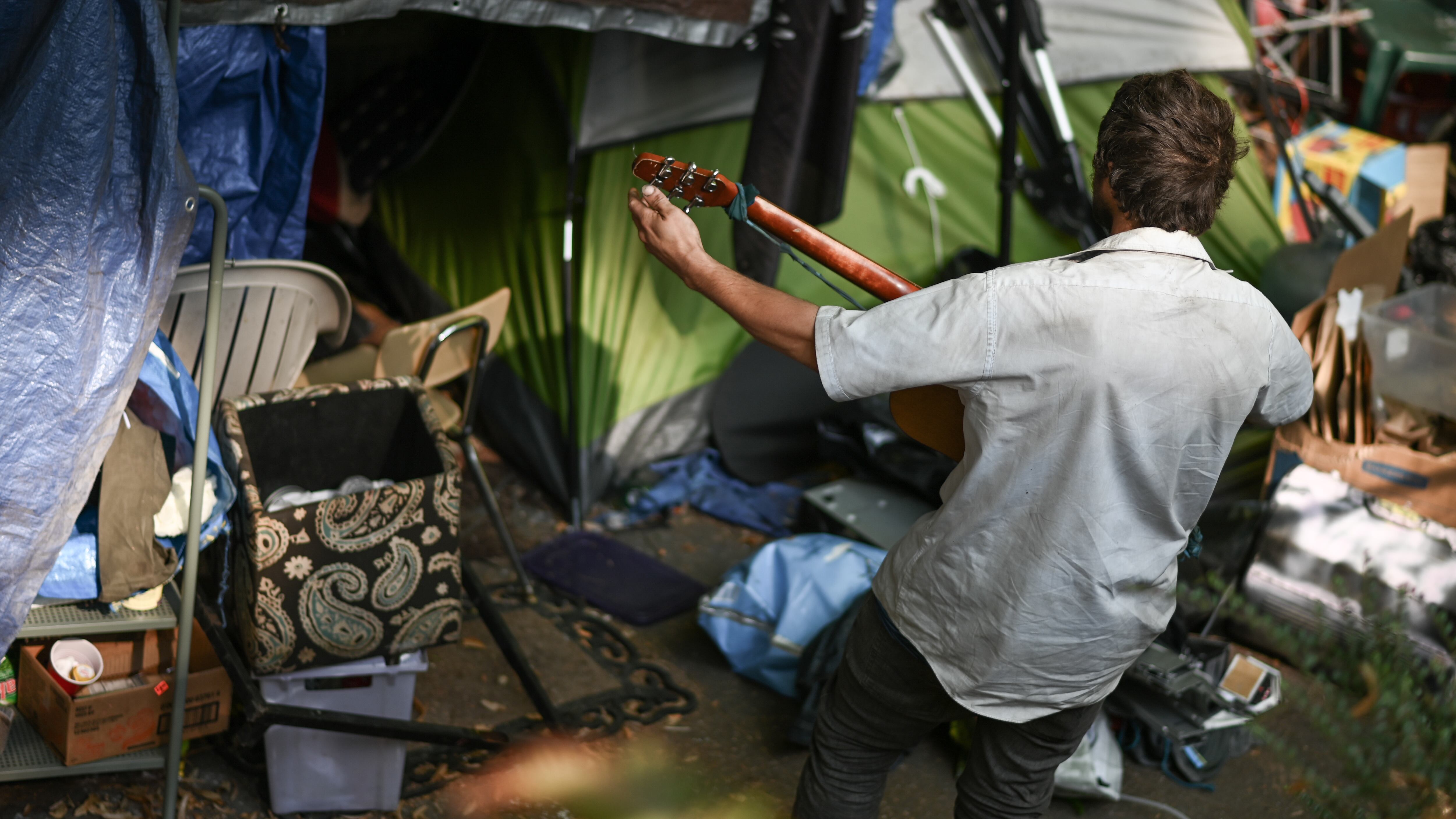Homer Williams says many of the Portlanders frustrated by the symptoms of mass homelessness haven’t considered the practical effects of sleeping—or not sleeping—night after night on the sidewalk or in a car.
“If there’s anything we’ve learned: You get somebody off the street, it doesn’t take long for their old self to show up,” Williams says. “Anybody forced to live on the street, without a good night’s sleep, which you can never get, or hygiene, or food on a consistent basis, you will mentally degrade and physically degrade. You can stop it—and allow them to come back.”
Williams, the Portland real estate developer behind the towers of the Pearl District and South Waterfront, is now focused on building structures much closer to the ground: module pod villages across the city. Williams and his nonprofit, Oregon Harbor of Hope, have launched a shower and laundry van that travels to campsites around the city, and invited homeowners to rent out a spare bedroom to a person without a home.
Those basic dignities are the focus of this week’s Dive interview with Williams and Harbor of Hope managing director Lisa Marandas. In this conversation, they describe how people on the street seek to build neighborhoods with each other—and how Harbor of Hope’s villages might prove an effective model for the same reason.
Here are a few highlights from the chat:
WW: How did COVID-19 change the way you managed your homeless services?
Williams: The primary thing is that just because of the spacing, we had to reduce our account by half. So, it was half as effective as it was. Having said that, 700 people in the last 15 months have gone on to either housing or other programs. It’s been very successful. Probably half the people that are there go to work every day.
What has been the biggest hurdle of trying to fix homelessness during COVID?
Marandas: I employ folks that are living outside, with all of the unrest that we’ve experienced in our city, just collectively folks inside and out [that] it’s really affected. I mean, can you imagine living on the streets with all the unrest and in dealing with COVID? So, it really reverberated to my staffing by folks on the trucks.
Homer, your background is in the private sector, having played a large role in the development of the Pearl District. Do you ever look at this and say why is this crisis my job to fix and not the responsibility of the city?
Williams: Well, I’m lucky because I happen to love the work. I get more pleasure out of this than any building ever built. So, I’m the wrong guy to ask. We got a very big job ahead of ourselves as a city. Until we find that first step for all these people on the street, we won’t have our city back. My focus is on finding a safe place for these people: community.
